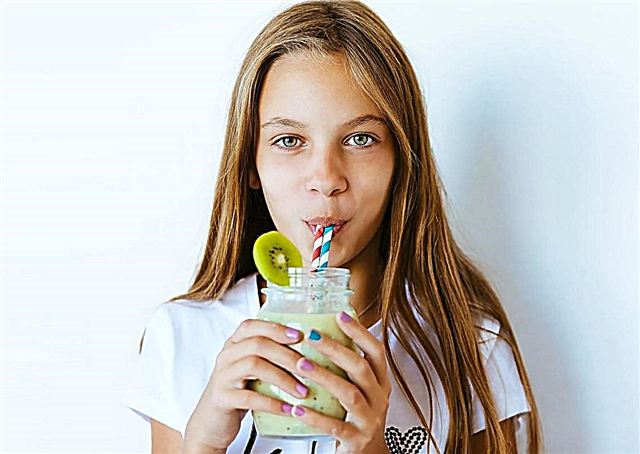
It is very important to suspect early symptoms of rotavirus infection in a timely manner. This can help prevent the development of dangerous complications in the future. This article will help you understand how long the incubation period of the disease lasts, as well as how long the disease lasts.

When do the first signs appear?
Scientists have figured out the cause of the rotavirus infection. Its causative agent is considered to be rotavirus, which belongs to the reovirus family. Currently, 9 types of rotaviruses have been identified, but the most common subtype of rotavirus A.
Like most viral diseases, rotavirus infection has a fairly short incubation period. On average, it ranges from 12-15 hours to a week. However, in most cases, the incubation period for rotavirus infection is usually only 1–2 days.

After entering the body, the virus does not immediately cause clinical symptoms. An incubation period is required for a child to develop adverse symptoms. The time from the moment viruses enter the body until the first symptoms develop is called the incubation period. At this time, the viruses that have got into it begin to multiply actively.
Each sick child has a different incubation period, which depends on many factors. So, the following reasons affect the time when the first symptoms appear in children:
- the nature of the diet;
- individual susceptibility to infectious diseases;
- existing chronic diseases of internal organs;
- congenital or acquired immunodeficiency.

Most often, rotavirus affects children aged from one to 5 years. It is believed that babies who are breastfed are less likely to get rotavirus infection. Breastfeeding provides the baby with the maternal antibodies that the baby needs to form passive immunity that protects the baby's body from infection.
It often happens that the first manifestations of rotavirus infection go unnoticed. It is not uncommon for children attending kindergarten to get sick. In this case, the infection spreads quite quickly from an infected child to a healthy one.
The first signs of infection in a child are so nonspecific that parents do not immediately notice them. At the same time, they “write off” changes in the baby's behavior and tearfulness on children's whims. In such a situation, it is very important that the sanitary and epidemiological regime is strictly observed in the kindergarten. A sick child should not contact healthy ones. Only in this way can outbreaks of diseases in children's collectives be prevented.

The baby can also become infected by eating poorly washed fruits and vegetables or infected dairy products. Rotavirus tolerates cold quite well and can persist for quite a long time in adverse conditions.
How long does the high temperature last?
After the end of the incubation period, the general condition of the child begins to change. A characteristic sign of rotavirus infection, which is part of the clinical triad of the disease, is an increase in body temperature. As a rule, in the first two days it rises slightly and reaches subfebrile numbers.
After 24-48 hours, the temperature begins to rise. By the end of the second day of the acute period of the disease, the body temperature can rise to 38-39 degrees.
At this time, the child's general condition deteriorates significantly. The baby begins to have a fever, the fever builds up. The child becomes lethargic, whiny. The baby may have sleep disturbances. The high body temperature of the crumbs, as a rule, persists for 2-3 days. At the same time, as a rule, the baby also develops diarrhea.


Average duration of illness
The adverse symptoms of rotavirus infection can persist for several days. The duration of the disease largely depends not only on the general condition, but also on the number and activity of rotaviruses that have entered the child's body.
The acute period of rotavirus infection usually lasts from three days to a week. At this time, the child has characteristic symptoms of the disease. The very first signs of the disease are usually not specific. So, the baby has general weakness, headache and soreness in the muscles, the body temperature begins to rise. The kid usually refuses to eat, he may be nauseous. In some cases, vomiting is even possible.
Rotaviruses can enter a child's body through the respiratory tract. In this regard, the baby may develop soreness and redness in the throat. These symptoms often resemble those of ARVI. This is why rotavirus infection is often confused with other respiratory diseases.

The acute period of the disease is replaced by recovery. This time is necessary for the child's body to fully recover the strength spent on fighting the infection. Recovery times are usually short-lived. On average, the period of convalescence (recovery) is 4-8 days.

During the recovery period, the baby's general condition is normalized. Diarrhea gradually decreases and then disappears. The crumbs begin to have an appetite, and the intestines normalize.
After the first symptoms appear, the baby is still infectious. It will still be contagious about 8-10 days after the height of the disease. There are cases when a virus carrier occurs after rotavirus. In such a situation, the child can be contagious for 1-2 months.
Rotavirus infection is treated with various medications. The main goal of therapy is to improve the overall well-being of the baby and normalize the work of his gastrointestinal tract. A sick baby must be rehydrated and detoxified, and a special diet is also prescribed.

If rotavirus infection is not treated correctly, the risk of complications increases. It is very important to prevent dehydration during treatment.... For this, the child needs to drink a lot from the moment the first adverse symptoms appear.
In severe cases of the disease, it may be necessary to administer special medicinal solutions through droppers. The need for hospitalization is determined by the pediatrician.

The initial state of immunity is a very important indicator. A good functioning of the immune system can reduce the risk of developing this disease. From an early age, you should teach your child to follow simple rules of hygiene. It is very important for parents to explain to the baby that after using the toilet and the street, as well as before eating, he needs to wash his hands with soap and water.
After the transferred infection, the child develops acquired immunity. This is due to the fact that specific antibodies - immunoglobulins - appear in his blood. They will protect the child's body from future encounters with rotavirus. The general condition of the child also affects the development of immunity. In some weakened babies, passive antibodies to rotaviruses are practically not formed.
For information on how to treat rotavirus infection, see the next video.



